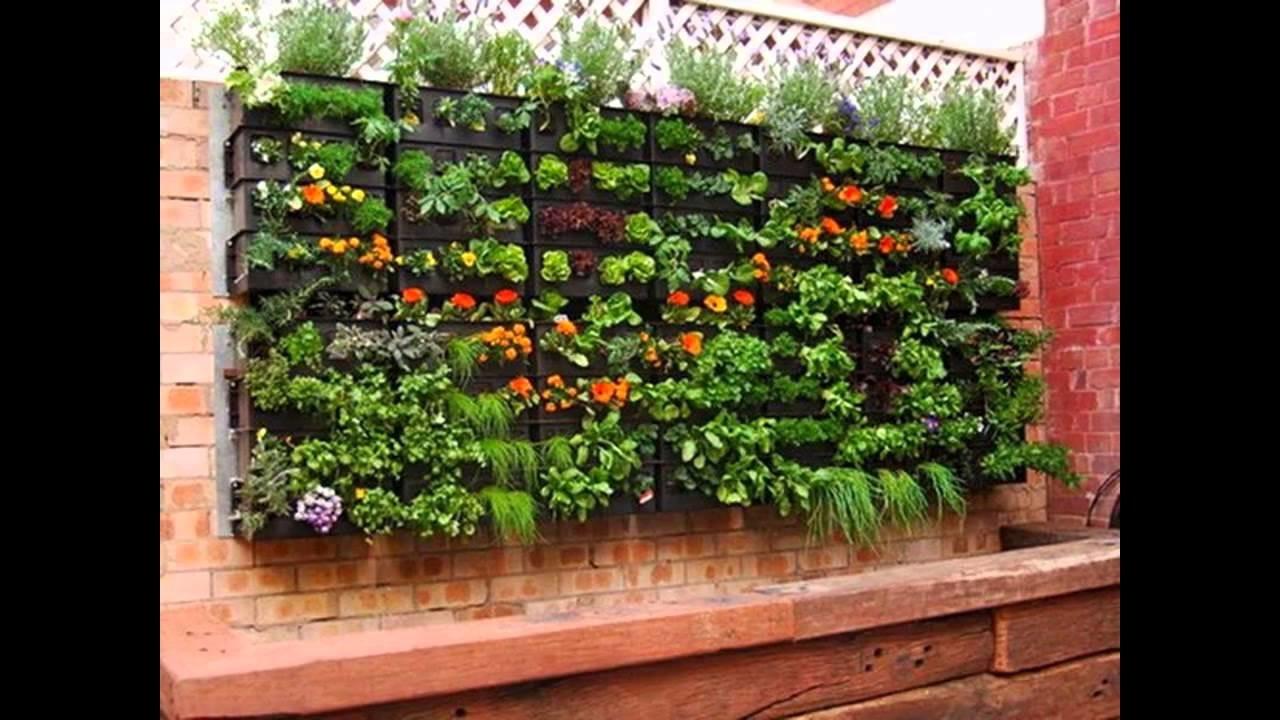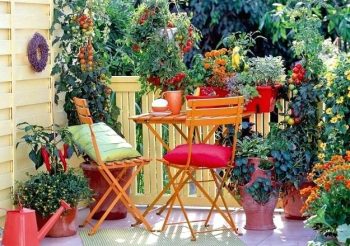
6 Easy Ways To Add Instant Value To Your Home Part 6
Part 6 – Invest Some Time In Gardening
Landscaping and gardening can add tens of thousands of dollars to your property. Unlike other kinds of home improvements, it not only adds instant value, but it is also the gift that keeps on giving. A carefully thought-out garden will literally add more value year on year as trees mature and provide those much sought after qualities like shade, privacy and screening. Spend some time on simple things like weeding, planting new flowers and shrubs, and if need be, new turf.
A neglected garden can lower your home’s value by somewhere between 5-15%. While taking your gardening efforts from ‘good’ to ‘excellent’ can add up to 6-7% in value to your home.
Growing veggies in pots and containers
Do you want to grow vegetables but your property lacks space? One way of adding life to a backyard, balcony, patio or rooftop is to grow vegetables in pots or containers. Container gardening is not as difficult as you might imagine.
Containers give you the freedom to control the environment in which your plants are growing.
IDEAS FOR CONTAINER GARDENING

Start with pots. The bigger the pot the better
- Larger pots will need a little space and will have room for the roots to grow. Also, the advantage of a large pot over a smaller pot is that they will hold water better. And with a bigger container, you can grow more varieties.
- If you can use barrels, tubs, buckets, boxes and other tubs and troughs then this is the preferred method. Make sure you have holes in the bottom so the water can runoff.
Maintenance Tips for Container Gardening with Vegetables
- While clay pots may look more attractive than plastic pots, plastic pots retain moisture better. And they won’t dry out as fast as unglazed terra-cotta ones. If you are determined to use clay pots then why not put a plastic pot inside.
- Black pots are a good idea as they attract and absorb heat from the sun.
- The majority of plants will need watering two times a day. During summer insert the smaller pot into a larger pot and fill in space with moss or newspaper. When you water the plant include the space between the pots.
- Hanging baskets make an effective decoration and are great space savers. You can grow herbs, cherry tomatoes and strawberries at eye level.
- To improve draining add about 25mm of gravel at the base of the pot.
- Every fortnight give the plants some liquid fertilizer.
- Apply some compost to add trace elements to container soil.
- Putting plants where they will receive the best sunlight is ideal. Also, make sure the area has good ventilation. Keep an eye out for insects that can cause harm to your plant.
- Prepare yourself a calendar and circle the dates for routine tasks.
WINDOW BOX CONTAINERS
Window boxes are great for growing edible flowers. If you choose a window box fill it with a soilless mix. Don’t take soil from your garden as it is likely to contain unwanted insects and the soil is very heavy. You can grow marigolds and other related edible flowers. Most vegetables and plants need 6 to 8 hours of sunlight.
Keep up the moisture and add organic ingredients like fish emulsion or manure. Even liquid seaweed is a good option.
SUPPORTING YOUR PLANTS
If you are growing vegetables that climb then adding supports is a must. Climbing plants can have a variety of supports such as stakes, netting, trellis or cages.
Insert your supports at the same time as you plant.
Plan your vegetable layout first. Plants that climb are ideal for plants that grow low. The climbers can climb up a trellis, whilst the low growers spread at the base. This is a good arrangement as you will reduce the space for weeds to grow.
Mix quick-maturing plants, such as lettuce or radishes, with longer-growing ones, like tomatoes or broccoli.
Group plants with similar needs for sun and water, such as pole beans, radishes, and lettuce; cucumber, bush beans, and beets, tomatoes, basil, and onions, and peas and carrots.
Here is a list of 10 herbs to grow together in a container.
WHAT ARE THE BEST CONTAINERS FOR VEGETABLES
Below is a shortlist of vegetables that are container friendly and which container types are most suitable for each vegie.
Beans, snap
Container: 20-litre window box
Varieties: Bush Blue Lake, Bush Romano, Tender Crop
Broccoli
Container: 1 plant =20-litre pot, 3 plants = 60-litre tub
Varieties: DeCicco, Green Comet
Carrots
Container: 20-litre window box at least 30cm deep
Varieties: Danvers Half Long, Short ‘n Sweet, Tiny Sweet
Cucumbers
Container: 1 plant = 4-litre pot
Varieties: ‘Patio Pik’, ‘Pot Luck’, ‘Spacemaster’
Eggplant
Container: 20-litre pot
Varieties: Black Beauty, Ichiban, Slim Jim
Lettuce
Container: 20-litre window box
Varieties: Ruby, Salad Bowl
Onions
Container: 20-litre window box
Varieties: ‘White Sweet Spanish’, ‘Yellow Sweet Spanish’
Peppers
Container: 1 plant = 7-litre pot, 5 plants = 60-litre tub
Varieties: Cayenne, Long Red, Sweet Banana, Wonder, Yolo
Radishes
Container: 20-litre window box
Varieties: Cherry Belle, Icicle
Tomatoes
Container: Bushel basket
Varieties: Early Girl, Patio, Small Fry, Sweet 100, Tiny Tim
RELATED ARTICLES
Our 6 Part Series Index: –
- Part 1 – Paint Your Walls
- Part 2 – Update Your Kitchen
- Part 3 – Increase Your space
- Part 4 – Renew Outdoor Areas
- Part 5 – High-pressure Clean Old Surfaces
- Part 6 – Invest In Gardening
Thinking of Selling? In this climate, the agent you chose is more important than ever.
If you’re looking to sell your home, our agents will be able to advise you on what areas of your home you should focus on before listing your property for sale.


